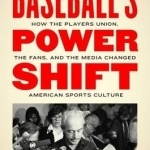Baseball's Power Shift: How the Players Union, the Fans, and the Media Changed American Sports Culture
BookThis item doesn’t have any media yet
2016 | Business & Finance
Baseball fans and the media pinch hit for the players. From Major League Baseball's inception in the 1880s through WorldWar II, team owners enjoyed monopolistic control of the industry.Despite the players' desire to form a viable union, every attempt to doso failed. The labor consciousness of baseball players lagged behindthat of workers in other industries, and the public was largely in thedark about labor practices in baseball. In the mid-1960s, star playersSandy Koufax and Don Drysdale staged a joint holdout for multiyearcontracts and much higher salaries. Their holdout quickly drew supportfrom the public; for the first time, owners realized they could illafford to alienate fans, their primary source of revenue. Baseball's Power Shift chronicles the growth and development ofthe union movement in Major League Baseball and the key role ofthe press and public opinion in the players' successes and failures inlabor-management relations.
Swanson focuses on the most turbulentyears, 1966 to 1981, which saw the birth of the Major League BaseballPlayers Association as well as three strikes, two lockouts, CurtFlood's challenge to the reserve clause in the Supreme Court, andthe emergence of full free agency. To defeat the owners, the players'union needed support from the press, and perhaps more importantly,the public. With the public on their side, the players ushered in a newera in professional sports when salaries skyrocketed and fans beganto care as much about the business dealings of their favorite team asthey do about wins and losses.
Related Items:
| Published by | University of Nebraska Press |
| Edition | Unknown |
| ISBN | 9780803255234 |
| Language | N/A |
Images And Data Courtesy Of: University of Nebraska Press.
This content (including text, images, videos and other media) is published and used in accordance
with Fair Use.
